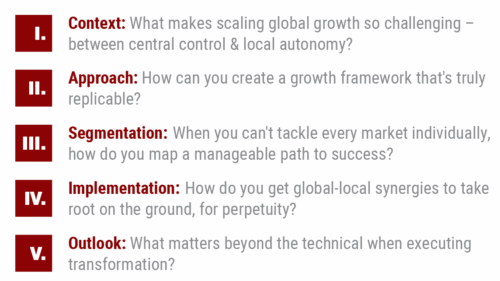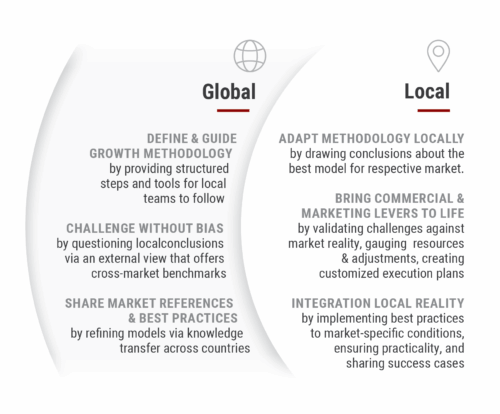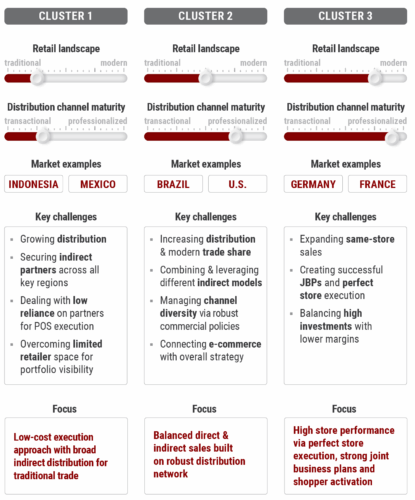
International Growth Transformation: Effectively driving sustained growth across multiple geographies
Publications
International Growth Transformation
Effectively driving sustained growth across multiple geographies
For FMCG multinationals, achieving international growth isn’t just a matter of having the right global go-to-market strategy – it’s about making that strategy work across vastly different local realities.
While CEOs increasingly prioritize securing profitable, sustainable growth across diverse global markets, many companies find themselves caught between two extremes: centralized control that misses local nuances or decentralized execution that loses strategic coherence.
In this report, we explore how companies can operationalize this global-local balance to unlock consistent performance across markets. It presents a people-driven growth model capable of balancing centralized strategic direction with strong local market execution – integrating strategy and execution, global alignment with local relevance and the empowerment of teams via the right tools, structures and incentives.

Balancing global & local views
Success hinges on defining distinct, yet complementary, roles between global and local teams. Rather than imposing top-down directives, global should provide frameworks, tools and shared metrics – while empowering local teams to adapt and execute based on market reality.

The segmentation imperative
Emerging markets combine rapid growth with structural challenges – expanding consumer bases meet fragmented retail landscapes where millions of small outlets drive up cost-to-serve. Meanwhile, developed markets present an inverse challenge: mature category dynamics mean growth must come from share-stealing rather than market expansion, demanding higher marketing investments and longer-term return horizons.
Our framework segments markets across six key dimensions, from size of the prize and commercial support needs to distribution channel maturity and macroeconomic context. This approach enabled one multinational food company to create three distinct clusters, each with tailored growth strategies: low-cost execution for traditional trade-heavy markets, balanced direct and indirect sales for mixed environments and high-performance retail execution for modern trade-dominated geographies.

From frameworks to the field
Through our work across 1,500+ GTM and commercial strategies as well as 50+ complex multi-country programs, we’ve identified that successful companies transform global teams from reviewers into enablers. Download the full report to access our complete framework, including detailed segmentation models, country-specific case studies and practical implementation insights for building lasting global-local synergies.
Find out more by reading the full report
TALK TO US
- On 28 October 2025














